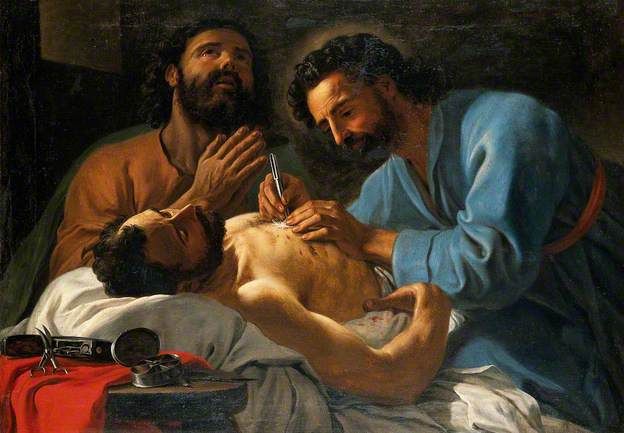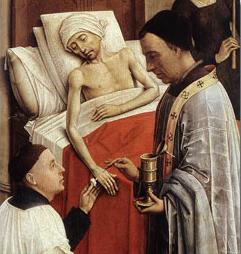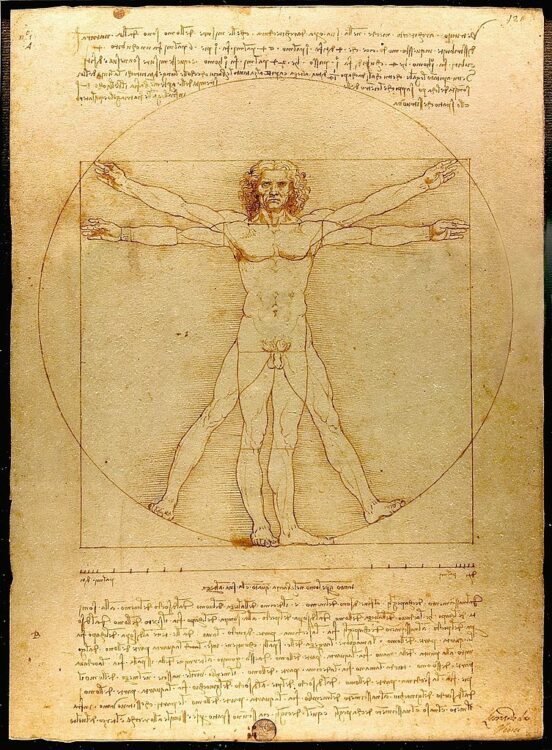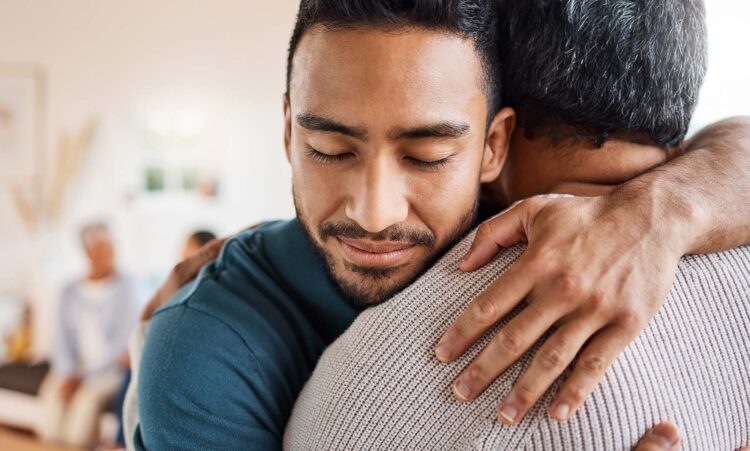Question: Anointing the sick has gained in popularity. In my church it is offered in the Sunday Worship service and many people come forward for the laying on of hands and to be anointed. I usually ask the person what they desire to be prayed for. Increasingly people are coming to be anointed for someone else. I question whether this is appropriate. What do you think about being anointed for someone else?
Frank answers: This is a timely question because many churches observe St. Luke’s Day (October 18). Because St. Luke the Evangelist was a physician (Colossians 4:14) and the Gospel of St. Luke and its sequel, the Acts of the Apostles, are studded with healing stories, it has been a day on which to lift up the Church’s ministry of healing and to make the laying on of hands and anointing of the sick available in a public way. Some pastors use this as an opportunity to teach about anointing of the sick and to let people know it is offered to those who are hospitalized and receiving treatment for serious illnesses. I did this in my congregation. I also received the laying on of hands and anointing, along with confession and absolution and Holy Communion, before surgery for colon cancer from a visiting Swedish priest and monk.
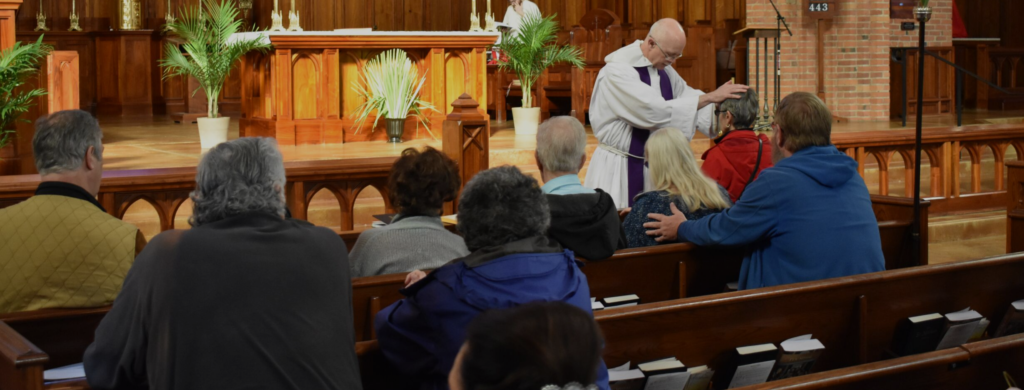
The Ministry of Healing
The elements of the Church’s ministry of healing are laid out in the Letter of James 5:13-16. The elders (presbyters) pray over and anoint the sick in the name of the Lord, hear a confession of sins and grant forgiveness (absolution). To this was added already by ca. 150 A.D. communion of the sick from the sacramental elements consecrated at the Sunday Eucharist (see Justin Martyr, Apology, chapter 67). Anointing of the sick continued to be practiced in the church, although by the end of the Middle Ages in the West it was construed as “extreme unction,” the anointing of the dying as part of “the last rites.” It was because of this development that it was largely abandoned by the Protestant Reformers, although included in the Ministry to the Sick in the Swedish Manual of Olavus Petri (1529), the first vernacular occasional services book.
The image above this post is the figure of the anointing of the sick and dying from the altar triptych of “The Seven Sacraments” painted by the Dutch artist Rogier van der Weyden and his workshop between 1445 and 1450.
To the question about whether anointing can be received for someone else, the answer is NO. Sacraments and sacramentals are performed on the body and must be received in faith. You can’t be baptized for someone else. You can’t receive communion for someone else. You can’t be forgiven for someone else. You can’t be anointed for someone else.
The pastor or priest should be willing to visit someone whose illness precludes them from attending a public service. The laying on hands with prayer and anointing the body with oil before someone goes into the hospital for a medical procedure is the best approach because once someone is in the hospital the medical staff flies into action. An evening visit before someone goes into the hospital in the morning allows a time to use the means of grace in an unhurried way and to assure the person facing a medical assurance that he or she is in God’s hands as well as the hands of the medical professionals. We once scheduled a healing service with anointing and Holy Communion the night before a member was to have surgery for lung cancer that was attended by several congregation members. But hospital staffs are usually cooperative with clergy for a visit before a procedure.
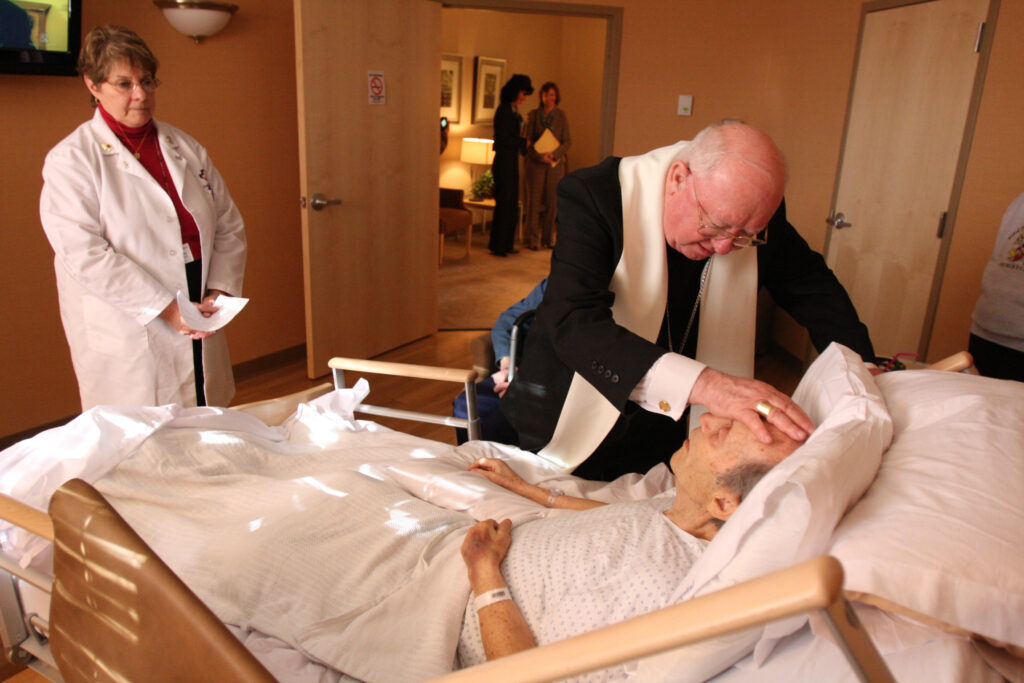
I’ve also had the experience you report. When the ministry of healing is offered publicly, some people come forward just to “sample” it or to be “comforted” by the laying on of hands and the anointing. Some congregants think that they should be a part of everything that is offered in a public service. Others find great consolation in this ministry for reasons of mental health or to heal relationships. They want applied to themselves in ordinary circumstances what is really an extraordinary ministry. In some cases what they really need is pastoral counseling or confession and absolution. (Absolution, at least in Lutheran practice, also includes the laying on of hands.) Conditions must be treated with the right remedies.
Massage Therapy
I think those who are not sick yet desire (and may need) a ministry with touch and anointing should seek out massage therapy. I’m serious. Massage also includes the laying on of hands and the application of oil for the purposes of promoting healthy bodies and healthy minds. Massage and various forms of body work are all about touch and healing. I’ve seen ads of massages offered to retreatants in retreat centers.

Massage is an ancient practice, attested in many of the world’s oldest civilizations. Chinese records dating back 3,000 years document its use; the ancient Hindus, Persians and Egyptians (see the image below) applied forms of massage for many ailments; and Hippocrates wrote papers recommending the use of rubbing and friction for joint and circulatory problems.

The Mayo Clinic states on its website that
Massage is generally considered part of complementary and alternative medicine. It’s increasingly being offered along with standard treatment for a wide range of medical conditions and situations.
“Studies of the benefits of massage demonstrate that it is an effective treatment for reducing stress, pain and muscle tension.
“While more research is needed to confirm the benefits of massage, some studies have found massage may also be helpful for:
- Anxiety
- Digestive disorders
- Fibromyalgia
- Headaches
- Insomnia related to stress
- Myofascial pain syndrome
- Paresthesias and nerve pain
- Soft tissue strains or injuries
- Sports injuries
- Temporomandibular joint pain”
Massages are one of the most efficient ways of staying in good health and maintaining a well-balanced nervous system, soothing the muscles and keeping the connective tissue limber, and removing toxins from the body.
Pehr-Henrik Ling, the “father of Swedish Massage”
Massage has always been regarded as a therapeutic practice. Interestingly, the person most associated with the development of modern massage therapy (Swedish massage) was a Swedish Lutheran theologian and health practitioner named Pehr-Henrik Ling (1766-1839).

Ling’s father was a priest in the Church of Sweden and Ling himself received a degree in theology from Lund University in 1799. Of poor health, he traveled abroad and studied languages at the University of Copenhagen. In Copenhagen he met a Chinese martial artist and expert in Tui na, a Chinese hands-on-body treatment, named Ming. Ming and Ling became fencing and exercise partners in Copenhagen and remained friends throughout Ling’s life. When he returned to Sweden he was appointed fencing master at Lund University. He claimed that the movements of the body had contributed to his own health. He continued to study anatomy and physiology and went through the entire medical curriculum at the university, although without taking a degree. In 1813 he founded and was appointed principal of the Royal Gymnastic Institute Center in Stockholm that trained gymnastic teachers. He is rightly regarded as the father of Swedish gymnastics, but while he promoted the development of massage therapy at the Institute he is not really the father of Swedish massage. That distinction goes to the Dutch physician Johann Georg Mezger. Mezger named this massage therapy “Swedish” in honor of Ling. Ling’s work was promoted by his students after his death. It’s too bad he didn’t leave a larger body of writings with reflections on his work on the body.

Swedish massage involves soft, long, kneading strokes, as well as light, rhythmic, tapping strokes, on topmost layers of muscles, combined with movement of the joints. By relieving muscle tension, Swedish massage therapy can be both relaxing and energizing and it may help after an injury. For really tense or painful “trouble spots” in the body the massage therapist may give a deep tissue massage, using deliberate strokes that focus pressure on layers of muscles, tendons, or other tissues deep under the skin. Deep tissue massage can be quite therapeutic — relieving chronic patterns of tension and helping with muscle injuries, such as back a sprain.
Don’t Forget the Feet
Our feet bear the weight of the whole body, but they are the least pampered part of the body. To pamper your feet and keep them strong and flexible, a daily foot massage for a few minutes is good option. A regular foot massage along with reflexology helps in promoting physiological as well as physical health.
Reflexology is an ancient healing practice based on the principle that there are reflex points on the feet that correspond to the body’s different organs and glands. The human foot is an evolutionary marvel, capable of handling hundreds of tons of force and your weight in motion. It has 42 muscles, 26 bones, 33 joints, 250,000 sweat glands and at least 50 ligaments and tendons. In particular the feet have almost 15,000 nerve endings.
So, in reflexology pressure is applied to these reflexes on the feet, which promotes good health. Here are some health benefits of foot massage and reflexology:
Improves blood circulation
Fights depression by relieving some of the symptons
Helps in relaxation after a tiring and stressful day
Promotes better sleep because of the above benefits.

Oils
Oils have also been used for their medicinal properties. In Greek and Roman societies the body was generously oiled in the public baths with rubdowns after exercise. Both the bath and the rub down with oil may have been a model for baptizing and anointing of candidates for initiation in the ancient church.

abhyanga oil massage
The ancient Indian Ayurvedic medical practice of abhyanga makes use of different oils, usually heated, for different purposes and according to the seasons of the year. Although the sanskrit word abhyangam means “massage,” abhyanga is not a massage in the usual understanding. It is an application of herbal oils vigorously rubbed into the skin of the whole body from head to toe, following “marma points” or the junctures of energy flow in the body. Ayurvedic practitioners claim that abhyanga increases the production of blood corpuscles and antibodies which protect the body from viruses and illnesses, vitalizes the body, retards the process of aging and brings vitality, and has other benefits. Abhyanga is a ritual process of anointing that goes back thousands of years. The oil is appropriate to the season of the year and the specific needs of the body, according to ayurvedic science, and is prescribed by an ayurvedic practitioner. It is applied to the whole body.

This is synchronous abhyanga performed in Kerala province, India. It is sometimes done with four hands to represent the four arms of the goddess of healing. It is recommended to sit in a herbal steam sauna for about10 minutes after the massage treatment to help the oils soak into the skin. Sometimes steam boxes are provided.

Christian Anointing of the Sick
The Christian rite of anointing the sick in the early Middle Ages, before the ancient Christian ministry of healing became the sacrament of extreme unction, called for anointing with the sign of the cross the five sense organs, the neck, the throat, the region between the shoulders, the breast, and parts of the body which were painful—as many as fifteen different places. In other words, much of the body was anointed. Today the anointing is restricted to the forehead and/or the hands.

As sacramental practice has preferred more water in bigger fonts for Holy Baptism, whole loaves of bread and larger chalices of wine for Holy Communion, perhaps we also need to consider more application of oil in the Anointing of the Sick. These sacramental rites are signs of the wholeness of the coming kingdom of God. They need to witness to fullness of life under God’s reign, not to paucity.
Pastor Frank Senn
